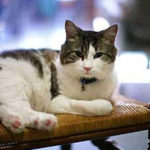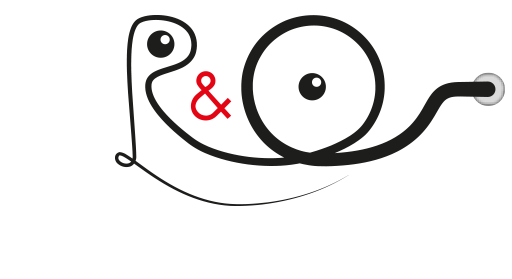Cats Tail Code
What is your cat trying to tell with their tail?

Decoding Your Cat’s Body Language
There’s no getting around the fact that cats are mysterious creatures. Dogs make it pretty clear what they want—feed me, take me out, pay attention to me. But decoding cat behaviour to figure out what a cat is “saying” can be confusing, especially if you’re a new cat owner. Cats meowing is one thing, but understanding cat body language is another tricky puzzle. It is possible, though. All you need is a little help from an expert to crack the code. Let’s find out what cat body language really tells us, from head to tail.
Head Butting
You’re on the couch, petting your purring cat when he catches you off guard and smacks his forehead into yours. Is he trying to knock you out? It’s actually the opposite. This cat behaviour is a friendly gesture, and also a way to mark you as part of his territory.
“When cats ‘head butt’ you with their forehead and/or chin, they are marking you with their scent as a form of identification or communication,” says Lana Fraley Rich, The Catsultant and prominent cat behaviourist.
So, consider yourself lucky to be owned by your kitty and accepted into his inner circle.
Face Rubbing
You may have caught your cat rubbing his face on the corner of your favourite chair, or the dinner table legs, a milk carton, shoes or even your legs. It seems strange if you don’t know why. The Catsultant can help us out with this cat body language: “Rubbing is a natural feline marking behaviour. Cats rub on walls, furniture, shoes and even other things lying around on the floor. They are covering you and the things around them with pheromones, which come from glands on their face and head. This behaviour creates a comforting and calming odour for your cat.”
Apparently, the legs are the most common target, and if you get a walk-by leg rub, it could mean your cat sees you as a friend. Of course, it could also be a call for attention.
Staring and Not Staring
This cat behaviour is a little more complex. Cats “talk” with their eyes, explains Lana, so it’s a good idea to know how to read the cues. She says it all depends on the dilation of their eyes and position of the eyelids, which can translate to a simple message or a powerful one. The Catsultant explains what to look for:
Sudden dilation of the iris: This cat body language could be an indicator of strong emotional arousal or fear.
Staring without blinking (usually at another animal): Can be a sign of control, dominance or aggression; sometimes used to control access to resources like his cat food or the litter box.
Wide open and alert (when staring at you): You’ll see this when a cat feels safe with someone, and it can be taken as a sign of trust.
Slit-eyed stare: The usual emotions behind this kind of stare are aggression or fear.
Droopy eyelids: Your kitty is relaxed around you, and you might be able to give him a “kitty kiss” by slowly blinking your eyes at him.
The Belly Reveal
You’ve seen this cat behaviour before—your kitty flops down, rolls onto his back and shows you his belly. Here’s a little advice. When this happens, don’t make the fatal mistake of taking this as an invitation to touch or rub the belly. These aren’t dogs we’re talking about here. If you ignore this warning and throw caution to the wind, beware that on about pet number two and a half, your hand will most likely be grabbed and bunny-kicked with claws extended. Touching a cat’s stomach will set off his instinct to defend himself, and without remembering it’s his parent’s hand, he can get carried away. So, if it’s not a request for a belly rub, what does this cat behaviour mean?
In terms of cat body language, showing their stomachs is a momentous occasion, notes Lana.
“This is a big deal, and it also means that the cat is very comfortable and relaxed in his surroundings,” she says.
Just remember—resist the urge to ruffle the belly fur!
Running Wild
The Catsultant calls this cat behaviour the “cat crazies,” which is an accurate depiction of the situation. The scene: it’s 3 a.m., and you’re sleeping soundly. Suddenly you’re woken up by the sound of something scrambling and banging into things. The culprit is probably your cat, on an epic “hunting” adventure through the living room.
Lana explains that “Sometimes cats can see a moth, fly or June bug and become ninja cats! … cats need to hunt—something—each day.”
She suggests making sure you’ve got a variety of high-quality cat toys on hand to meet this need. The Petlinks Fun Beam Laser Cat Toy is great for chasing, and Bergan Star Chaser Turbo Scratcher is perfect for frisky kitties. A teaser toy like Petlinks Mystery Motion gives cats a chance to stalk and pounce on faux prey.
Lana says that the cat crazies, also known as the zoomies, can strike at any time, but most likely happen in the morning or evening hours. That’s because “cats are crepuscular animals (like deer, which are more active at dawn and dusk).” Cats are also sensitive to changes in weather and might get friskier during a cold front.
Tail Thumping
This is another instance where cat behaviour is pretty much the opposite of a dog’s.
“Most cat behaviourists believe when a cat’s tail is swishing wildly or is doing a fast-thumping action, it is time to move back, leave the cat alone, and allow the cat some time to become a bit more relaxed,” says Lana.
She cautions to pay attention to cattail signs when you’re petting your kitty—he could become overstimulated quickly, and the tail might be your warning sign to stop. The tail thump also happens when a cat sees a bird outside the window, and he’s getting himself ready to attack his prey.
Showing Their Backside
This is a fun one. Have you ever had your cat, or any cat, turn around and show their tail end to you? Usually, this wouldn’t be a sign of anything good, but in cat body language—you’ll have to trust The Catsultant here—it is. When a cat spins around and puts his rear end inches from your face, it can catch you off guard and seem pretty weird and off-putting.
But Lana can help you see this cat behaviour in a new light: “When a cat shows his backside to you, he is putting himself in a very vulnerable position—because he trusts you. This behaviour is a form of communication through cat body language.”
So, there you go. Turns out it’s a very friendly gesture—consider it to be a compliment!
Now you have a few tips on how to unravel the mystery of cat body language. Maybe our feline friends aren’t so hard to interpret—they’re just misunderstood!
The above article was originally published on chewy.com by Nikki Naser on May 30, 2017.




